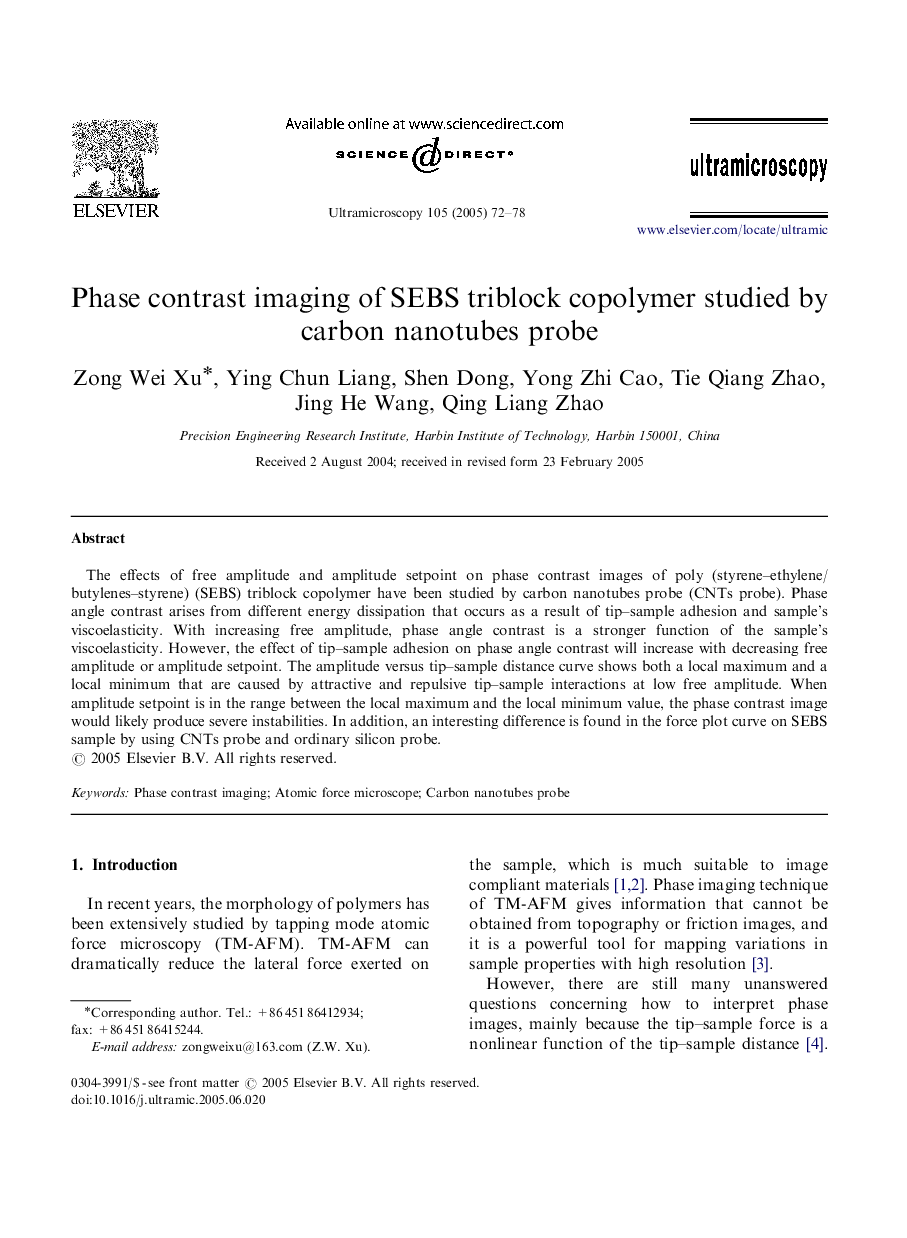| Article ID | Journal | Published Year | Pages | File Type |
|---|---|---|---|---|
| 9816846 | Ultramicroscopy | 2005 | 7 Pages |
Abstract
The effects of free amplitude and amplitude setpoint on phase contrast images of poly (styrene-ethylene/butylenes-styrene) (SEBS) triblock copolymer have been studied by carbon nanotubes probe (CNTs probe). Phase angle contrast arises from different energy dissipation that occurs as a result of tip-sample adhesion and sample's viscoelasticity. With increasing free amplitude, phase angle contrast is a stronger function of the sample's viscoelasticity. However, the effect of tip-sample adhesion on phase angle contrast will increase with decreasing free amplitude or amplitude setpoint. The amplitude versus tip-sample distance curve shows both a local maximum and a local minimum that are caused by attractive and repulsive tip-sample interactions at low free amplitude. When amplitude setpoint is in the range between the local maximum and the local minimum value, the phase contrast image would likely produce severe instabilities. In addition, an interesting difference is found in the force plot curve on SEBS sample by using CNTs probe and ordinary silicon probe.
Related Topics
Physical Sciences and Engineering
Materials Science
Nanotechnology
Authors
Zong Wei Xu, Ying Chun Liang, Shen Dong, Yong Zhi Cao, Tie Qiang Zhao, Jing He Wang, Qing Liang Zhao,
